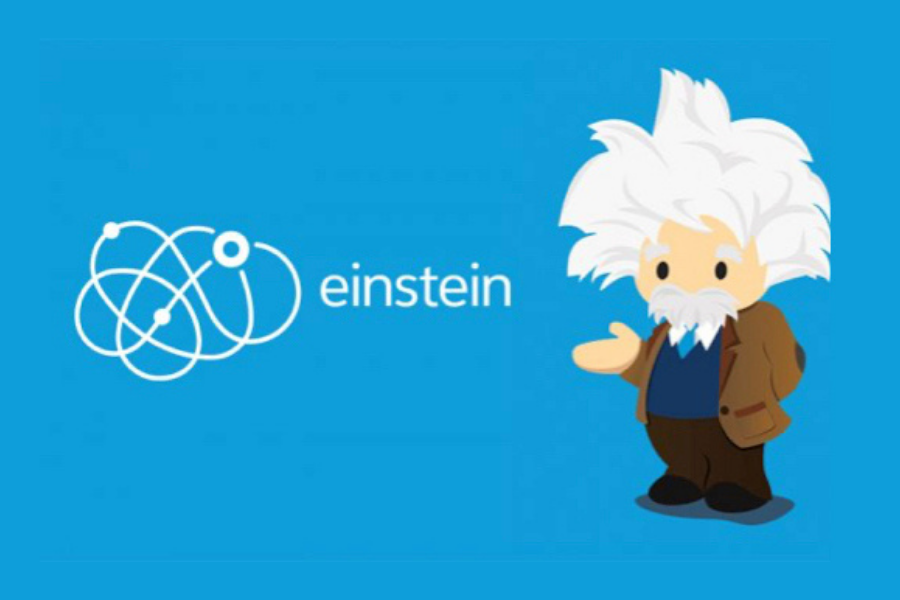
Salesforce Einstein is an AI platform that integrates with Salesforce to provide conversational AI capabilities to Salesforce customers. With Einstein, organizations can create chatbots that automate customer interactions, providing a more seamless and efficient customer experience. Some key features of Salesforce Einstein’s conversational AI capabilities include:
- Natural Language Processing (NLP): Einstein’s NLP capabilities enable chatbots to understand the intent behind customer inquiries and respond in a way that’s meaningful and relevant.
- Intent recognition: Einstein uses machine learning algorithms to recognize customer intent and provide the most appropriate response.
- Self-learning: Einstein’s conversational AI capabilities improve over time as the chatbot interacts with customers and collects data.
- Multi-channel integration: Einstein’s conversational AI capabilities can be integrated with multiple channels, including web, mobile, and messaging apps, to provide a consistent experience across all touchpoints.
- Customization: Einstein’s conversational AI capabilities can be customized to meet the specific needs of an organization, including integration with other Salesforce products and custom code.
Overall, Salesforce Einstein’s conversational AI capabilities provide organizations with a powerful tool for automating customer interactions and improving the customer experience.
Here is a sample conversational AI scenario using Salesforce Einstein:
Scenario: A customer contacts a company’s support team for assistance with a product issue.
- Customer: Hi, I’m having trouble with my product. Can you help me?
- Chatbot: Of course! I’d be happy to help. Can you please describe the issue you’re having with the product?
- Customer: Yes, the product isn’t working as expected. Can you help me troubleshoot it?
- Chatbot: Sure! Can you please provide me with the product’s serial number and any error messages you’re receiving?
- Customer: The serial number is 123456789 and I’m not receiving any error messages.
- Chatbot (using Einstein NLP and intent recognition): Based on the information you provided, it seems like the issue might be with the product’s settings. Let me check the troubleshooting guide and see if there’s a solution.
- Chatbot: I found a possible solution! Can you please try resetting the product to its factory settings and see if that resolves the issue?
- Customer: Yes, that worked! Thank you for your help.
- Chatbot: You’re welcome! Is there anything else I can assist you with today?
In this scenario, the chatbot uses Einstein’s NLP and intent recognition capabilities to understand the customer’s issue and provide a solution. The chatbot also collects information from the customer to better understand the issue and provide the most appropriate response.
Here’s an example of what the code for the above scenario could look like in Apex (Salesforce’s proprietary programming language):
global class ChatBotController {
global static String handleRequest(String userMessage) {
String response;
if (userMessage.contains('trouble with my product')) {
response = 'Of course! I\'d be happy to help. Can you please describe the issue you\'re having with the product?';
} else if (userMessage.contains('product isn\'t working as expected')) {
response = 'Sure! Can you please provide me with the product\'s serial number and any error messages you\'re receiving?';
} else if (userMessage.contains('serial number is')) {
response = 'Based on the information you provided, it seems like the issue might be with the product\'s settings. Let me check the troubleshooting guide and see if there\'s a solution.';
} else if (userMessage.contains('reset the product to its factory settings')) {
response = 'I found a possible solution! Can you please try resetting the product to its factory settings and see if that resolves the issue?';
} else if (userMessage.contains('that worked')) {
response = 'You\'re welcome! Is there anything else I can assist you with today?';
} else {
response = 'I\'m sorry, I don\'t understand what you\'re asking. Can you please rephrase your question?';
}
return response;}
}
